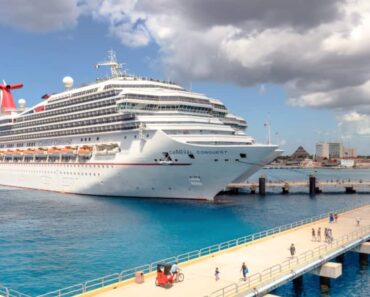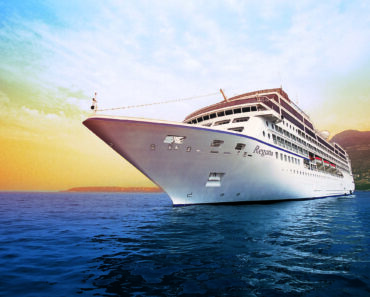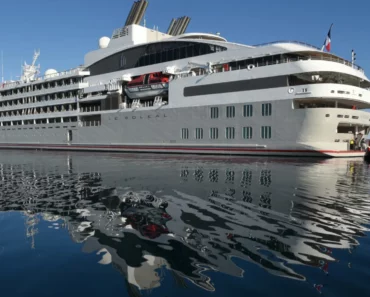Embarking on your first cruise can be both exciting and slightly overwhelming. The allure of exploring multiple destinations, indulging in delicious cuisine, and enjoying an array of onboard activities is undoubtedly enticing, but it’s also important to be prepared for your voyage. In this comprehensive guide, we’ll provide you with a wealth of insider advice and cruise tips and tricks to ensure that your first cruise is a smooth and memorable experience.
1. Research Before Booking
Before you even book your cruise, take the time to research the following:
- Cruise Lines: Different cruise lines cater to different types of travelers. Some are known for their family-friendly atmosphere, while others are more upscale and geared toward couples or luxury travelers. Research the cruise lines that align with your preferences.
- Destinations: Consider the destinations you want to visit. Cruises can take you to a wide range of locations, from tropical paradises to historic European cities. Choose an itinerary that excites you.
- Budget: Determine your budget for the cruise and factor in additional expenses, such as excursions, gratuities, and onboard activities.
- Cruise Length: Decide on the duration of your cruise. Some are as short as a few days, while others can last for several weeks.
2. Choose the Right Cabin
Selecting the right cabin can greatly impact your cruise experience. Here are some considerations:
- Cabin Type: Cruise ships offer various cabin categories, including inside cabins, oceanview cabins, balconies, and suites. Balcony cabins provide private outdoor space and stunning views.
- Cabin Location: Consider your preferences for cabin location. Cabins in the middle of the ship tend to experience less motion, while those at the front or back may have more movement. Also, think about proximity to elevators, dining venues, and other amenities.
- Amenities: Some cruise lines offer unique cabin amenities, such as concierge service, priority embarkation, and complimentary specialty dining. Explore these options if they align with your preferences.
3. Pack Wisely
Packing efficiently is crucial for any cruise. Here are some packing tips:
- Check the Dress Code: Review the cruise line’s dress code, which can vary from casual to formal nights. Pack appropriate attire for each evening.
- Clothing: Pack a mix of casual wear, swimwear, formal attire (if needed), and comfortable shoes for shore excursions.
- Toiletries: While cruise ships provide essential toiletries, bring any specific products or medications you may need.
- Travel Documents: Don’t forget to bring your passport, cruise documents, and any necessary visas.
- Power Strip: Cruise cabins often have limited power outlets, so consider bringing a power strip to charge devices.
- Carry-On Bag: Pack a small carry-on bag with essentials like medications, travel documents, and a change of clothes. Your checked luggage may take a few hours to reach your cabin.
4. Arrive a Day Early
Avoid the stress of last-minute travel delays by arriving at your departure port a day before your cruise. This provides a buffer in case of flight delays or other unforeseen issues.
5. Participate in the Safety Drill
Cruise ships conduct mandatory safety drills before departure. Pay close attention to the instructions, as they are essential in case of an emergency. Familiarize yourself with the location of life jackets and emergency exits in your cabin.
6. Explore the Ship
Once onboard, take some time to explore the ship. Cruise ships are like floating cities with a wide array of amenities, including pools, restaurants, bars, theaters, fitness centers, and more. Familiarize yourself with the ship’s layout to avoid getting lost.
7. Dining Tips
Cruise ships offer a variety of dining options. Here’s what you need to know about dining:
- Main Dining Room: Most cruises include dining in the main dining room, where you’ll enjoy a rotating menu of delicious dishes. You can choose your dining time (early or late seating) when booking.
- Specialty Dining: Consider trying specialty restaurants for a unique dining experience. Make reservations early, as these venues can fill up quickly.
- Buffet: The buffet is a convenient option for casual meals. It’s often open for breakfast, lunch, and dinner.
- Room Service: Many cruise lines offer complimentary room service, which can be a convenient option for a quiet breakfast or late-night snack.
- Dietary Restrictions: If you have dietary restrictions or allergies, inform the cruise line in advance. They can accommodate various dietary needs.
8. Excursions and Ports of Call
Exploring ports of call is a highlight of any cruise. Here’s how to make the most of your shore excursions:
- Book Excursions Early: Popular excursions can sell out quickly, so book your shore excursions in advance to secure your spots.
- Research Ports: Before arriving at a port, research the local attractions and activities. This will help you make the most of your time onshore.
- Time Management: Pay attention to the ship’s arrival and departure times in each port. Ensure you return to the ship well before the departure time to avoid being left behind.
9. Budgeting Onboard
While many activities and amenities are included in your cruise fare, there are additional expenses to consider:
- Gratuities: Most cruise lines automatically charge gratuities to your onboard account. Check the cruise line’s policy and adjust as necessary.
- Drinks: Alcoholic beverages, specialty coffees, and soda are typically not included in the cruise fare. Consider purchasing a beverage package if you plan to indulge.
- Spa and Services: Spa treatments, salon services, and some onboard activities may come with an additional cost.
- Shopping: Cruise ships have onboard shops, so budget for souvenirs and duty-free shopping if desired.
10. Stay Hydrated and Healthy
Staying healthy and hydrated is essential on a cruise:
- Water: Drink plenty of water, as the sea air and sun can be dehydrating. You can usually request tap water in the dining venues.
- Hand Hygiene: Practice good hand hygiene to prevent illness. Use hand sanitizers provided throughout the ship.
11. Entertainment and Activities
Cruise ships offer a wide range of entertainment options:
- Shows: Enjoy Broadway-style productions, comedy acts, and live music shows. Check the daily schedule for showtimes.
- Activities: Participate in onboard activities such as trivia, dance classes, cooking demonstrations, and more.
- Pools and Recreation: Make use of the pools, hot tubs, and recreational areas. Some cruise ships even have water slides and sports facilities.
12. Be Mindful of Motion Sickness
If you’re concerned about seasickness, here are some tips:
- Medication: Consider over-the-counter motion sickness medication or prescription options. Consult your doctor before your cruise.
- Choose Midship: Cabins in the middle of the ship tend to experience less motion.
- Sea Bands: Some travelers find relief with acupressure wristbands known as sea bands.
13. Connect with Fellow Travelers
Cruises are a fantastic way to meet people from all over the world. Strike up conversations with fellow passengers and participate in social activities to make new friends.
14. Respect Crew Members
Cruise ship crew members work tirelessly to ensure your comfort and safety throughout your voyage. Show appreciation for their hard work by being polite, considerate, and understanding. Remember that tipping is customary, and many cruise lines include gratuities in your final bill. However, if you receive exceptional service, consider leaving an additional tip to express your gratitude.
15. Use the Cruise Compass
Most cruise lines provide a daily newsletter or digital app called the “Cruise Compass” or “Daily Program.” This publication outlines the day’s activities, dining options, entertainment schedules, and important announcements. It’s your key to planning your day and staying informed about ship events.
16. Stay Organized
With a multitude of activities and destinations to explore, staying organized is essential:
- Use a Lanyard: Many cruisers wear lanyards with a clear plastic pouch to keep their cruise key card handy. It’s a convenient way to access your key card, which serves as your room key, identification, and onboard payment method.
- Create an Itinerary: Plan your activities and excursions in advance. Having a rough itinerary can help you make the most of your cruise.
- Set Alarms: If you have early-morning excursions or activities, set alarms to ensure you don’t miss out.
17. Internet and Connectivity
Cruise ship internet can be expensive and slower than what you’re used to on land. If staying connected is essential, consider purchasing an internet package in advance. Be prepared for occasional connectivity issues, and use your time onboard as an opportunity to unplug and enjoy the present moment.
18. Stay Active and Use the Gym
Cruise vacations are known for indulgent dining, but you can balance it by staying active:
- Fitness Center: Most ships have well-equipped fitness centers with state-of-the-art equipment. Take advantage of this to maintain your exercise routine.
- Onboard Activities: Join fitness classes, yoga sessions, or take a leisurely stroll on the ship’s deck to stay active.
19. Practice Safety First
Safety is a top priority on cruise ships:
- Life Jackets: Familiarize yourself with the location of life jackets in your cabin and learn how to put them on.
- Emergency Drills: Attend the mandatory safety drill before departure. It provides essential information on emergency procedures.
- Don’t Lean Over Railings: Never lean over the ship’s railings, especially when the ship is moving. Use caution and common sense.
20. Enjoy the Sunset and Sunrise
One of the most magical aspects of a cruise is witnessing breathtaking sunrises and sunsets over the open sea. Take the time to experience these natural wonders, as they can be some of the most memorable moments of your voyage.
21. Plan Ahead for Disembarkation
As your cruise comes to an end, it’s essential to plan ahead for disembarkation:
- Luggage Tags: Ensure that your luggage tags are securely attached to your bags and that you’ve placed them outside your cabin as per the ship’s instructions.
- Clear Your Account: Review your onboard account to ensure all charges are accurate and settle any outstanding balances.
- Disembarkation Times: Be aware of your assigned disembarkation time and location, which is typically based on your cabin category or loyalty status.
- Travel Arrangements: If you have flights or transportation arrangements post-cruise, make sure you have all necessary documents and are aware of any time constraints.
22. Post-Cruise Evaluation
After your cruise, take some time to evaluate your experience. Provide feedback to the cruise line through surveys or reviews. Your input can help improve future cruises for yourself and others.
Conclusion
Embarking on your first cruise is an exciting adventure filled with new experiences and unforgettable memories. By following these insider tips and tricks, you can make the most of your cruise vacation. From packing wisely and exploring your destinations to enjoying onboard amenities and respecting crew members, every aspect of your cruise can be a delightful and enriching experience. Bon voyage, and may your first cruise be the beginning of many incredible journeys on the high seas!







